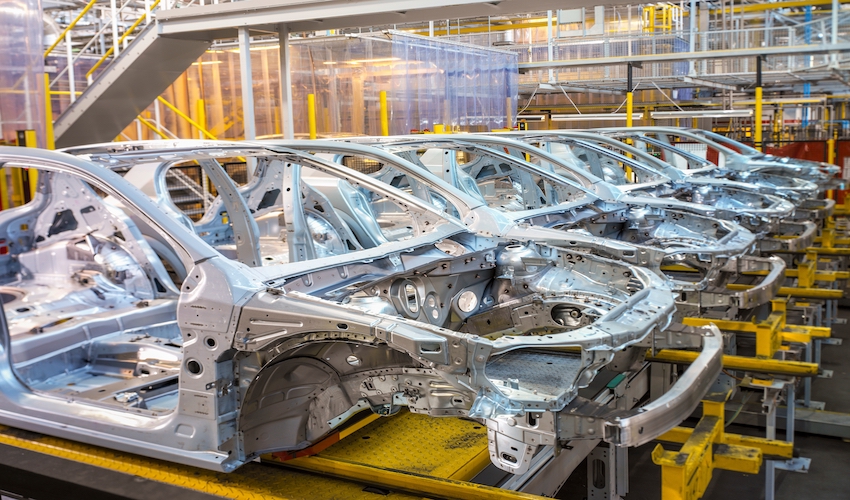Rethinking manufacturers insurance

How to turn new challenges and risks in manufacturing into new markets and rewards
Manufacturers around the world currently face a unique set of challenges that did not exist in their old environment. As they welcome new opportunities, they also confront new exposures for which they may not be fully prepared. These include safety and cybersecurity risks, financial and competitive challenges, and regulatory and political uncertainty, resulting in a manufacturing environment that is much more complex today than it was five years ago.
To better understand the changes facing manufacturers, Chubb conducted a study to uncover the latest trends and shed insights into how companies can best mitigate new risks. This article distills the learnings and discusses best practices manufacturers in the Asia Pacific region can adopt to manage new risks and capitalize on opportunities amid the shifting landscape.
-
Digitization opens doors to opportunities. And risks.
New manufacturing technologies are changing how items are made and increasing productivity for companies that invest in them. Processes that used to be physical are now digitized, and the products themselves have more technology embedded. Digitization can accelerate new product/service development and gather valuable information that can spark innovation in next-generation products.
At the same time, however, the implementation of sophisticated manufacturing techniques such as advanced process controls, robotics and automation require not only a large investment, but also an understanding that with emerging technologies come new and heightened operational and cyber security risks.
Recommendation: Manufacturers can benefit from speaking with their business partners, including insurance agents, bankers, advisors and auditors, and lawyers to ensure they evaluate and manage new exposures. Specifically, partnering with an insurance provider that has deep expertise and tailored solutions can help manufacturers using advanced technologies stay ahead of these emerging threats and develop strategies to mitigate risks.

-
Integrated supply chain leads to greater collaboration. And responsibility.
Manufacturers’ relationships with suppliers and customers are increasingly interdependent. As customers demand more speed, more reliable cycle times, and more transparent relationships, manufacturers are expecting the same from their suppliers. All of these factors have led to greater integration between suppliers and customers and with providers of third-party logistics, IT, and financial services.
Consequently, as sensitive data is often a necessary part of these collaborations, the amount of data stored and transacted between parties may be susceptible to a cyberattack. In addition, as turnaround times continue to shrink, and products become more customized, companies’ margin for error shrinks. Yet, many do not consider this type of exposure as part of their insurance program.
Recommendation: A solution that includes broad cyber insurance and knowledgeable risk engineering services can help address a breach when one occurs. For example, a supplier neglects to meet its obligations to the manufacturer, or becomes liable for a harmful product failure. More importantly, with an insurance solution in place, it can prevent a breach from happening in the first place.
Furthermore, having a comprehensive enterprise risk management strategy — one that is regularly updated to keep abreast of change — is increasingly important. One step manufacturing companies can take is a regular review of their enterprise risk strategy, to ensure they have sufficient and proper protections in place.

-
New service offering grows revenue. And liabilities.
Many manufacturers are switching from a product-only model to one that also includes a service offering. That is, they have moved beyond simply delivering a product to installing, monitoring, and servicing it. As a result, they are connected with customers and consumers in more ways and for a larger part of the product lifecycle. As their revenues grow from these activities; so do their potential liabilities.
Recommendation: While changes to product and service mix offer new paths to winning, it is important for manufacturers to protect against financial injury that could result from a product or service not meeting customer expectations. While warranties or contractual remedies exist, they alone cannot replace the lost revenue or reputational damage due to an actual or alleged product or service defect or failure to perform. An Errors and Omissions solution can help to fill this often overlooked gap in an insurance program.
In summary, the increasing complexity of the sector is opening up companies not only to new opportunities — new markets to serve, new ways of winning and keeping customers, and new flexibility in operations — but also to new exposures. Manufacturers have little control over many of their challenges; however, with awareness they can mitigate the risks, move their business forward and better position themselves for sustainable growth.
Ready to approach manufacturing through a new lens? Contact us to find out more about Chubb’s integrated insurance coverage solutions to address manufacturers’ emerging needs.
The benefit(s) payable under eligible certificate/policy/product is(are) protected by PIDM up to limits. Please refer to PIDM’s TIPS brochure or contact Chubb Insurance Malaysia Berhad or PIDM (visit www.pidm.gov.my)
This content is brought to you by Chubb Insurance Malaysia Berhad, Registration No. 197001000564 (9827-A) (“Chubb”) as a convenience to readers and is not intended to constitute advice or recommendations upon which a reader may rely. Any references to insurance cover are general in nature only and may not suit your particular circumstances. Chubb does not take into account your personal objectives, financial situation or needs and any insurance cover referred to is subject to the terms, conditions and exclusions set out in the relevant policy wording. Please obtain and read carefully the relevant insurance policy before deciding to acquire any insurance product. A policy wording can be obtained at www.chubb.com/my, through your broker or by contacting any of the Chubb offices or Chubb agents. Chubb makes no warranty or guarantee about the accuracy, completeness, or adequacy of this content. It is the responsibility of the reader to evaluate the quality and accuracy of material herein.

Have a question or need more information?
Contact us to find out how we can help you get covered against potential risks